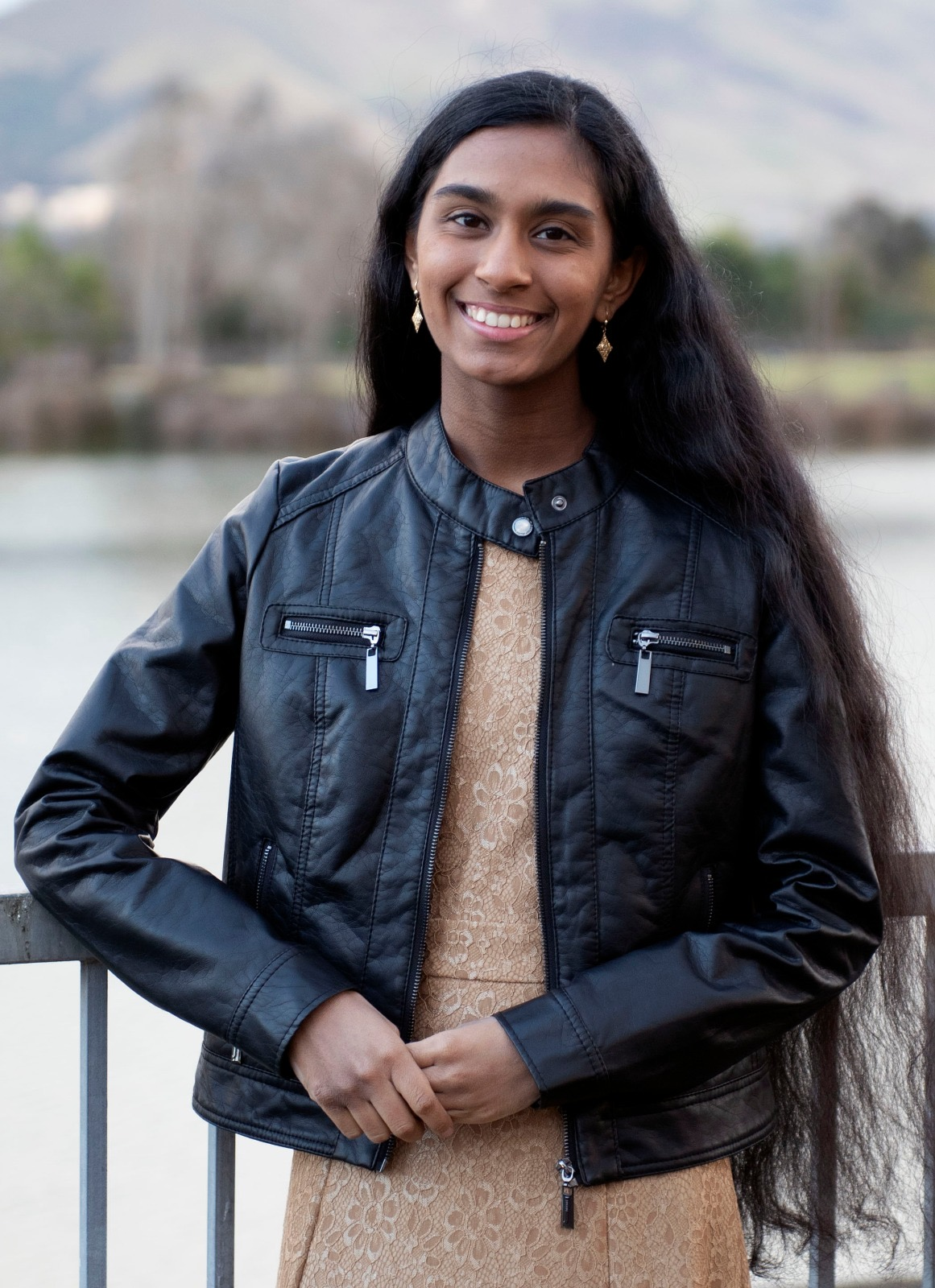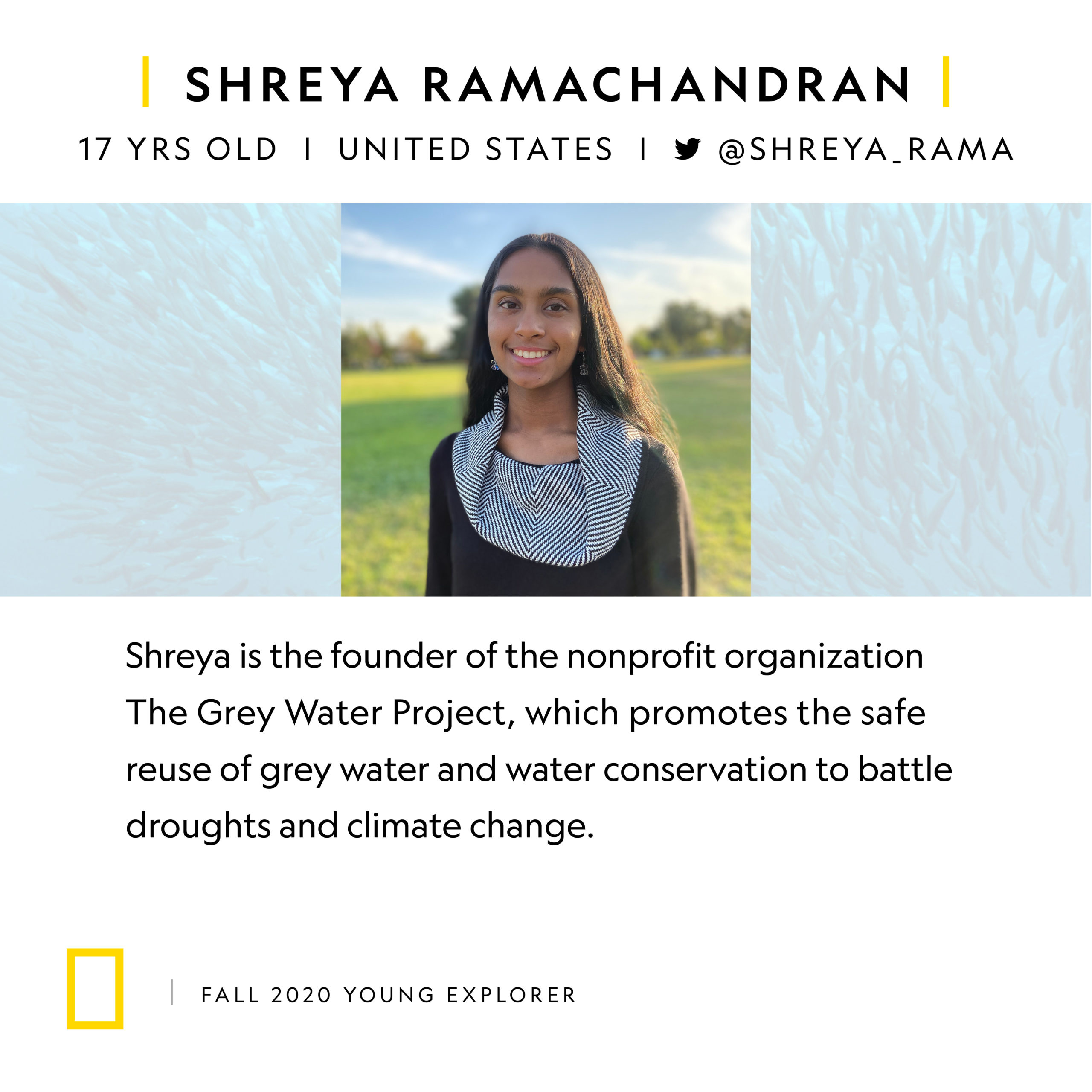
Shreya Ramachandran
CWEA’s Stockholm Junior Water Prize runner up from 2019 and 2020, Shreya Ramachandran, was recently featured in Discover Magazine, ABC7 News, Sierra Magazine and a climate documentary for her research and outreach on grey water which premiered on PBS’s Peril and Promise. The Grey Water Project is a non profit Shreya started which teaches people how to recycle gray water in their own homes. Shreya does workshops at schools, libraries and corporate events, and developed a gray water science curriculum that has been implemented in more than 90 schools so far. In late January, Shreya was named as a National Geographic Young Explorer.

In late January, Shreya was named as a National Geographic Young Explorer. Credit: Shreya Ramachandran
Ramachandran was awarded by CWEA in 2020 for her project titled: Impact of Soap Nut Grey Water Irrigation on Aquatic Life, Soil and Plant Health, the Soil Microbiome and the Occurrence of Escherichia Coli and Fecal Coliform and in 2019 for Water Recycling: The Effects of Soap Nut Grey Water on the Environment both projects submitted to the Stockholm Junior Water Prize (SJWP) competition. SJWP is considered the world’s most prestigious award presented to a high school student for a water-research project. The Water Environment Federation (WEF) has coordinated the U.S. competition since its inception in 1997, and partners closely with their Member Association (MA) to execute the program.
Shreya Ramachandran, 17, remembers witnessing California’s water crisis firsthand on a visit to Tulare County in 2014, when she was still a preteen. Tulare spans a large swath of farmland in California’s Central Valley, and at that time, locals were facing dire water shortages amid an ongoing drought made worse by climate change.
“I was talking to some of the people in the area whose wells completely ran dry, and they were left without water because they weren’t connected to the central water grid. They were trucking water in for even basic needs,” she said. “I was really affected by their stories, and I wanted to do something to help.”
The experience spurred Ramachandran, who lives in Fremont, California, to find ways to reuse water from sinks, showers and laundry machines — what’s known as gray water — to help people better cope with intense drought. She has won numerous awards for her research, was named a global finalist in the 2019 Google Science Fair, and is featured in the forthcoming PBS Peril & Promise climate change documentary, The Power of Us.
Ramachandran said that after she returned home from Tulare, she made every effort to conserve water in her life. She took shorter showers and turned off the tap when brushing her teeth, but it had little effect on how much her house consumed.
Around that time, Ramachandran’s grandmother was visiting from India, and had brought with her a handful of soap nuts. A soap nut, also known as a soap berry, is a small yellow or brown fruit encased in a hard, brown shell. Soap nuts are native to India, where they are used for bathing. Massage one in a bowl of water, and it will begin to lather and smell of apples, Ramachandran said.
The application portal for the 2021 competition is open! Deadline for 2021 submissions is April 15th, 2021. For guidance on preparing a project submission, please check the paper guidelines document, under the “Eligibility and Entry” tab on the website listed below. Best of luck!
Interested students can apply for the Stockholm Junior Water Prize online for 2021 here >